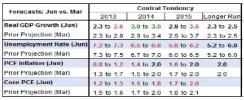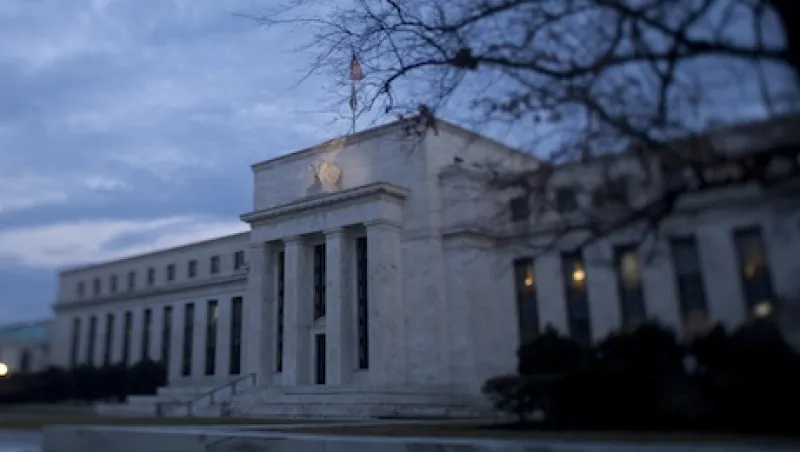Rising volatility in both bond and stock markets underscores the nervousness investors are experiencing in anticipation of reduced Federal Reserve quantitative easing.
Still, this policy adjustment shouldn’t surprise market observers, as investment and policy winds have been shifting for some time. In January we argued that both market-driven signals and a close examination of Fed language seemed to indicate significant division within the Federal Open Market Committee over its commitment to the third round of QE. Indeed, at that time we stated in our fixed-income market outlook: “We may be seeing a gradual beginning of QE coming off in 2013 and the slow process of moving toward the normalization of rates markets at the back-end of the yield curve,” which has largely come to pass since then.
Moreover, in April, we openly called on the Fed to reduce its level of asset purchases, which we argued were too large and were distorting financial asset prices of various kinds in unhelpful ways that risked possibly upending markets. Yet, now that QE tapering is upon us (it is very likely to be announced at the Fed’s mid-September meeting), markets appear to be adjusting only slowly to the new reality. In this piece, we examine a paradox that we believe is also likely to unsettle investors in the months ahead: Tapering is likely to come alongside downward revisions in the Fed’s central tendency projections for real GDP growth (see chart), which may well heighten volatility in markets as investors worry that the Fed is pulling back too soon.

|
We believe four vital pillars are supporting economic recovery in the U.S.: the rebound in housing; the energy revolution; cyclical improvement in labor markets; and more supportive lending and financial market conditions (relative to the past few years, although still recognizing constraints owing to aggressive regulatory and capital restrictions).
We recently addressed our views on housing more extensively, but suffice it to say that the QE-inspired wealth effect in evidence for high-income cohorts over the past few years is now feeding through to the broader residential real estate markets — this often takes an extended period of time to fully manifest itself. The broader housing recovery has had the effect of helping to “democratize” net-worth gains over the past year, which had previously been skewed toward affluent households, but much more has to happen over the coming months and years. As a result, we think it’s vital for the Fed to make sure higher mortgage rates do not hamper the real estate rebound, which is important to maintaining solid consumer spending. Furthermore, in our estimation, the residential construction sector is likely to represent an important area of the economy for jobs growth.
Next, we think the overarching economic impact of the revolution under way in the U.S. energy sector remains underappreciated, particularly the development of new technologies for extracting natural gas and oil. Annual imports of crude oil have fallen $400 billion since 2008, helping to improve the U.S.’s trade deficit (as witnessed by recent trade balance data) and to create a dynamic in which the dollar can remain strong (even in the face of occasionally dovish language from the Fed) while keeping inflation moderate and less volatile.
Indeed, these factors are actually contributing to reduce inflation in such a way that the Fed may proactively attempt to increase the rate of core inflation more toward its long-term objective of roughly 2 percent. That would be truly historic and may very well be a large part of forthcoming forward guidance, and easy monetary policy, over the coming months, especially as QE gradually fades into the sunset.
The labor market — a primary influence on monetary policy, economic growth and market confidence — has started to show clear cyclical improvements this year, despite facing some significant structural headwinds since the start of the financial crisis. Indeed, upward revisions in nonfarm payroll numbers have meaningfully strengthened the average pace of jobs growth this year, which has now reached just over 200,000 per month for the first half of the year. Still, even if we witness a rise in construction-related jobs over the next year, as housing recovers and economic growth likely accelerates in the back half of 2013, it is very possible that we will see the labor market participation rate grow alongside of this, which will likely keep unemployment levels relatively high — and policy accommodative — for some time to come.
Finally, from the standpoint of changes to monetary policy, we believe that the Fed will increasingly come to define slack in the labor force more broadly as the target it seeks to influence, rather than overly focusing on the unemployment rate. This should serve to strengthen the Fed’s forward guidance that policy will remain highly accommodative for a considerable period of time, even as the Fed tapers its QE program. The maintenance of easy policy is particularly key, as lending growth appears to have stagnated this year. For example, commercial and industrial loan growth has slowed to a near 6 percent rate in 2013, from last year’s range of 10 to 14 percent. Also, both recent and impending banking sector capital restrictions may curtail loan growth so low policy rates are likely to be appropriate for some time.
We think the U.S. economy is in the process of emerging from significant structural headwinds, which increasingly appear less negative. Although it may be easy to make a pessimistic medium-term case for the U.S. economy in the wake of financial crisis and painful recession (alongside myriad risks still plaguing the globe), we think such a case doesn’t adequately account for the positive economic elements outlined above. Nevertheless, the Fed’s economic projections for real GDP growth are still likely too high and should come down over the next few quarters, paradoxically, as the central bank tapers QE. These actions are likely to appear contradictory to many and may well add to investor nervousness and market volatility, but we suggest they merely represent the convergence of overly optimistic growth forecasts toward an actually improving economy.
Nevertheless, economic improvement must be considered within the context of an aging population (that is, moderate demographic headwinds), still-high government leverage levels, other long-term government financial obligations such as entitlements and a historically slow-growth global environment. Yet those factors are and will be in place for many years and have to be considered alongside of what the potential for monetary (or, for that matter, fiscal) policy can reasonably accomplish. In that context, and with reduced Treasury issuance needs, we believe QE tapering can begin now, and the economy won’t stumble from it.
Rick Rieder is chief investment officer of fundamental fixed income and co-head of Americas fixed income for BlackRock.






